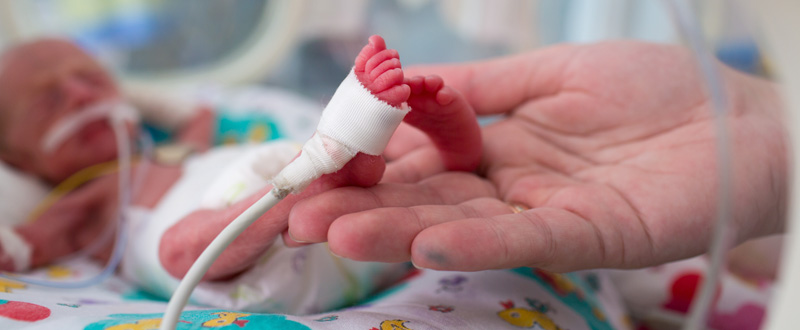Retinopathy of Prematurity (RoP) is a disease of the retina affecting prematurely born babies. In neonates in whom retinal vascularization is incomplete, abnormal proliferation of immature retinal blood vessels develops due to relative lack of oxygen following the withdrawal of therapeutic oxygen. The abnormal new blood vessels that grow are fragile and prone to leakage. It can result in significant damage to the retina including the formation of scar tissue and retinal detachment.
Types
Retinopathy of Prematurity is graded according to its severity: Stage I through “Plus” disease (+).
- Stage 1: Demarcation line
- Stage 2: Ridge
- Stage 3: Ridge with the extraretinal fibrovascular proliferation
- Stage 4: Retinal detachment “Plus” disease (+)
Symptoms
- Depending on severity, visual acuity varies from 20/20 to total blindness.
- Variable visual field defects, usually in the central field of vision (observed during an ophthalmological examination done by a retina specialist)
Diagnosis
Diagnosis is done during an ophthalmological examination either before the infant leaves the hospital or within five to seven weeks of birth. Screening is recommended for all premature and low-birthweight babies, especially those receiving supplemental oxygen.
Risk Factors
The primary risk factor is premature birth. The condition is most common in infants with a birth weight of fewer than 1250 grams (~2.75 lbs) and a gestational age of fewer than 28 weeks.
ROP is commonly seen in low-birthweight infants, premature infants, and those who received oxygen therapy. It is occasionally seen in full-term neonates.
What can you do to reduce risk?
The best way to reduce the risk of ROP is to prevent premature birth through prenatal care and educating expecting mothers about factors that can influence a baby’s health in utero. If a child is born prematurely, close monitoring of oxygen levels and appearance of the retinal blood vessels is essential. To prevent ROP, pediatricians attempt to balance the amount of supplemental oxygen the infant is receiving with the appearance of the blood vessels. Oxygen is necessary, but too much can be damaging.
Treatment
Currently, treatment relies on the destruction of the areas of the retina that are without blood vessels. It becomes necessary only if the disease has reached a specific, well-defined stage, as the milder forms often regress spontaneously. By destroying the retina, the stimulus for the growth of the abnormal blood vessels is removed. The destruction is achieved by cryotherapy (literally freezing the retina, using a small pulse) or photocoagulation with laser energy. Rarely, surgery is undertaken in an attempt to remove the scar tissue.

